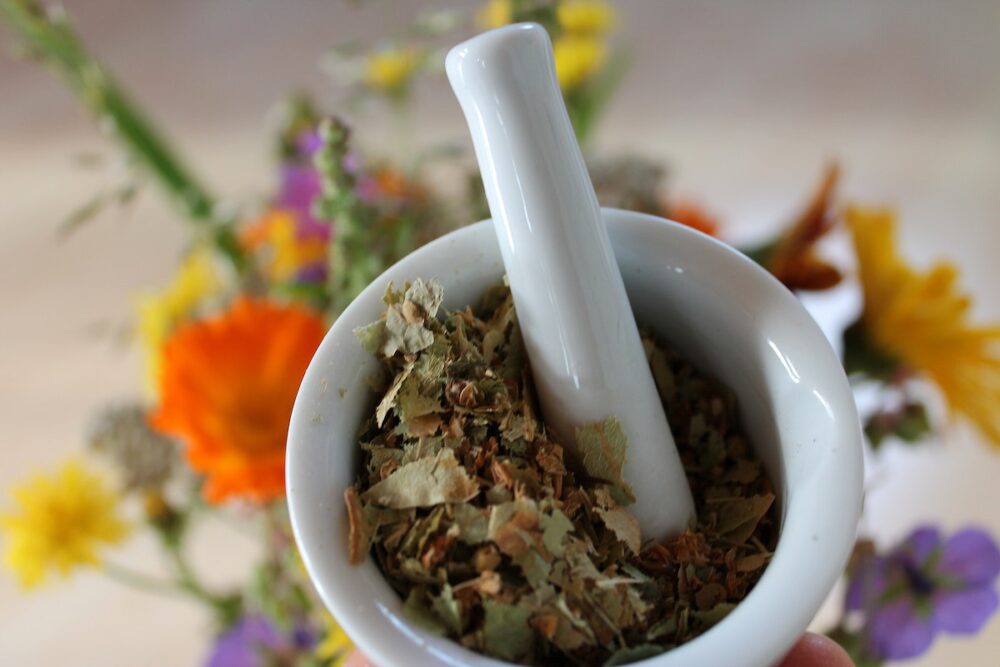When I was younger, I would have a terrible cold for nearly seven out of 12 months each year. I would always be sucking on a cough drop or taking Mucinex, trying everything to relieve the awful, ceaseless coughing that accompanied the cold. Each year, my mother would give me the same advice: to pop a single clove in my mouth to “cure” the cough. And each year, I would be surprised when my coughing almost instantaneously stopped after I bit down on the bitter clove. In high school, I mentioned this practice to my biology teacher, and she promptly identified it as an Ayurvedic practice.
I believed Ayurveda meant essential oils, meditation, and medical quackery. It was pseudoscience — it wasn’t supposed to work. However, I took a step back and realized that this alternative medicine had a major presence in my life. My mom would give me ajwain, or carom seeds to help with indigestion and sesame seeds for cramps. When I had a sore throat, she’d make kashayam, a hot, peppery herbal tea, to reduce the soreness. My mom was simply doing what my grandma had done for her, what my great-grandma had done for my grandma, and so on. They were following an ancient, Vedic practice that has thrived for over three millennia. Ayurveda exists in some form in millions of Indian households around the world, which made me eager to learn more about it.
I found that for every paper that dismissed Ayurveda as obsolete quackery, another supported an Ayurvedic concept or tradition with credible evidence. In a 2014 study, researchers from the Laboratory of R&D on Pharmaceutical Processes in Ribeirão Preto, Brazil confirmed cloves to have antifungal, antibacterial, and anti-inflammatory properties. Cloves contain eugenol, a compound that reduces the inflammatory response in the body, which explains why it was so effective in suppressing my cough.
Other scientific studies note the health benefits of other spices and herbs. “Ayurvedic Herbs: A Clinical Guide to the Healing Plants of Traditional Indian Medicine,” a book by Dr. M.S. Premila, lists over 60 medicinal plants that are commonly used in Ayurveda and substantiates each with pharmacological and clinical data. For example, the book notes that carom seeds contain enzymes that improve the flow of stomach acids, thereby reducing bloating and indigestion. I also discovered many contemporary practices that have Ayurvedic origins. For example, oil pulling (essentially, using oil as mouthwash) is an Ayurvedic dental hygiene technique that has recently gained traction. In one study, researchers from the Meenakshi Ammal Dental College in Chennai, India found that oil pulling reduced plaque in adolescents with plaque-induced gingivitis. While not every paper that I read was completely supportive of Ayurveda, it became clear that there was real science behind the practice. When I asked my mother why she supported Ayurvedic practices, she said, “Ayurveda isn’t perfect. But neither is modern or Western medicine.” No field of medicine is infallible, and all benefit from intensive study and research.
Ayurveda is ancient and intuitive, focusing on the wellness of a person as a whole. Modern medicine aims to understand illness and wellness on a molecular, cellular, and organismal level. In some ways, Ayurveda has paved the path for modern medicine. For example, according to Dr. Hari Sharma and his research team at the Ohio State University Center for Integrative Medicine, modern medicine has adopted the Ayurvedic philosophy of preventative treatment. Ayurveda has also modernized in some aspects. In one review article, Professor Robert K. Wallace of Maharishi University describes Ayurgenomics, a burgeoning field in Ayurveda, which integrates Ayurvedic concepts with modern genetics research. Both modern and alternative medicine have evolved with each other over the centuries, so it seems illogical to pit them against each other. Most people want to know which one “works better,” but the truth is that the efficacy of either depends on the individual and their situation. It may instead be more useful to look for the conventional in the strange, the flaws in the seemingly flawless, the modern in the ancient, and the familiar in the foreign.
Image courtesy of Rawpixel






